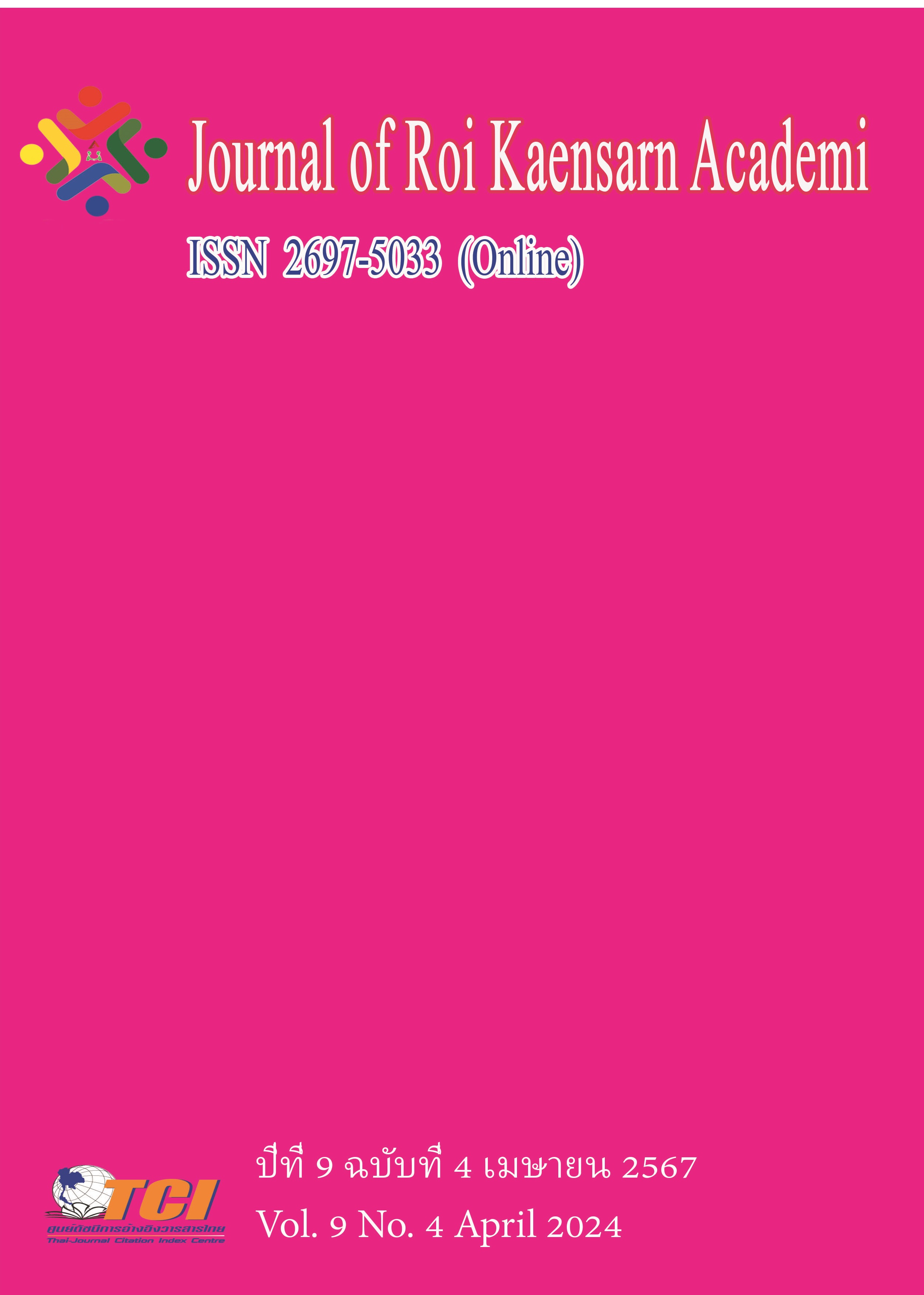The Working of Research on Experience Dimension of MR Products in Chinese Cultural Tourism
Main Article Content
บทคัดย่อ
The aim of this study is : (1) to assess the actual impact of Yangzhou Ancient Canal's MR experiential products on Chinese cultural tourism; (2) to systematically investigate the key factors that influence visitors' experience dimensions when using MR cultural tourism products. During the research process, we carefully selected 203 tourists and 6 industry experts as research participants, and collected data through questionnaire surveys and expert interviews as two research methods. An online questionnaire platform system was utilized for data collection. In the data analysis stage, we employed structural equation modeling to validate the proposed hypothesis model on factors influencing visitors' experience with MR products in cultural tourism. Additionally, online SPSS software was used for analyzing the results of questionnaire surveys.
Through this study, we have accomplished the following outcomes: (1) validated the positive impact of immersion, emotion, learning, and interaction on the experience of MR cultural tourism products; (2) derived design strategies for cultural tourism products based on empirical data; (3) developed an evaluation model for assessing the experience of MR cultural tourism products; (4) provided recommendations for future design decisions to facilitate the further advancement and application of MR technology in the field of cultural tourism.
Article Details
เอกสารอ้างอิง
Davis, F. D. (1989). Perceived usefulness, perceived ease of use, and user acceptance of information technology. MIS Quarterly. 13 (3), 319-340.
Han, D. I. D., Weber, J., Bastiaansen, M., Mitas, O., & Lub, X. (2019). Virtual and augmented reality technologies to enhance the visitor experience in cultural tourism. In J. Weber & O. Mitas (Eds.), Augmented reality and virtual reality: The power of AR and VR for business (113-128). Springer.
Huang, Y. C., Backman, S. J., Backman, K. F., & Moore, D. (2013). Exploring user acceptance of 3D virtual worlds in travel and tourism marketing. Tourism Management. 36, 490-501.
Jacob, J., & Nóbrega, R. (2021). Collaborative augmented reality for cultural heritage, tourist sites, and museums: Sharing visitors’ experiences and interactions. In M. C. Neves & F. J. G. Silva (Eds.), Augmented Reality in Tourism, Museums and Heritage: A New Technology to Inform and Entertain (27-47).
Knekta, E., Runyon, C., & Eddy, S. (2019). One size doesn’t fit all: Using factor analysis to gather validity evidence when using surveys in your research. CBE—Life Sciences Education. 18 (1), ar1.
Lv, X., Li, H., & Xia, L. (2020). Effects of haptic cues on consumers' online hotel booking decisions: The mediating role of mental imagery. Tourism Management. 77, 104025.
Moyle, B. D., Moyle, C. L., Bec, A., & Scott, N. (2019). The next frontier in tourism emotion research. Current Issues in Tourism. 22 (12), 1393-1399.
Pine, B. J., & Gilmore, J. H. (1998). Welcome to the experience economy. Harvard Business Review. 76 (4), 97-105.
Ratnasari, R. T., Gunawan, S., Mawardi, I., & Kirana, K. C. (2021). Emotional experience on behavioral intention for halal tourism. Journal of Islamic Marketing. 12 (4), 864-881.
Sharma, P., & Nayak, J. K. (2019). Understanding memorable tourism experiences as the determinants of tourists' behaviour. International Journal of Tourism Research. 21 (4), 504-518.
Skavronskaya, L., Scott, N., Moyle, B., Le, D., Hadinejad, A., Zhang, R., & Shakeela, A. (2017). Cognitive psychology and tourism research: State of the art. Tourism Review. 72 (2), 221-237.
Tabachnick, B. G., Fidell, L. S., & Ullman, J. B. (2013). Using multivariate statistics. Boston, MA: pearson.
Xie, Y. (2015). Basic tourism science. The Commercial Press.
Zhang, G. (2001). Chinese cultural tourism: Theory, strategy and practice. Nankai University Press.
Davis, F. D. (1989). Perceived usefulness, perceived ease of use, and user acceptance of information technology. MIS Quarterly. 13 (3), 319-340.
Kim, J. H., & Ritchie, J. B. (2014). Cross-cultural validation of a memorable tourism experience scale (MTES). Journal of Travel Research. 53 (3), 323-335.
Lowry, P. B., Gaskin, J., Twyman, N., Hammer, B., & Roberts, T. (2012). Taking ‘fun and games’ seriously: Proposing the hedonic-motivation system adoption model (HMSAM). Journal of the association for information systems. 14 (11), 617-671.

